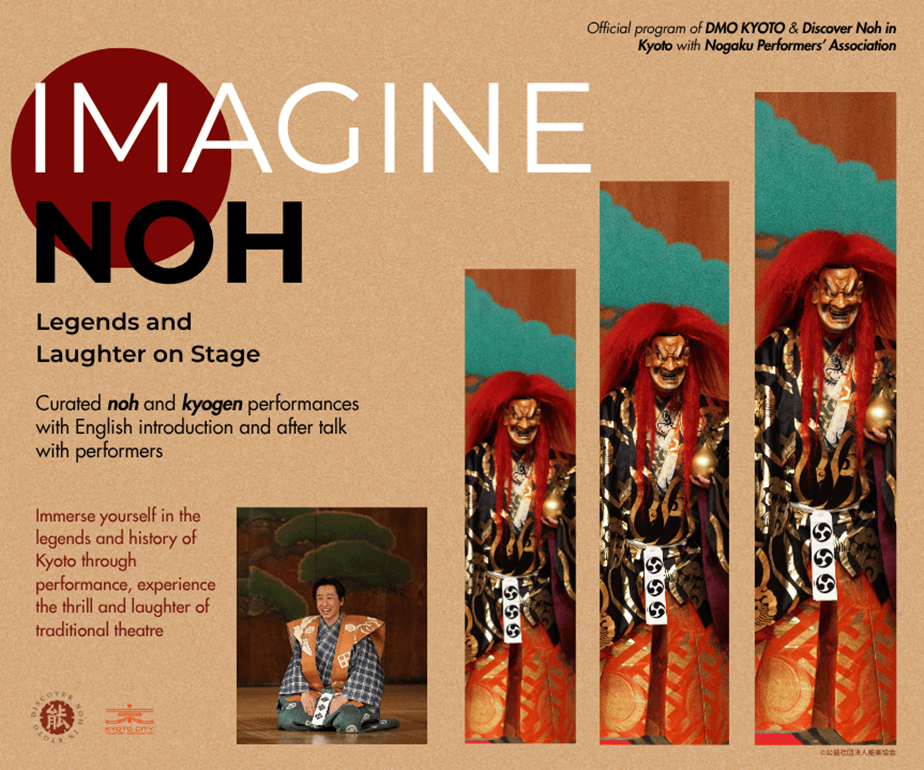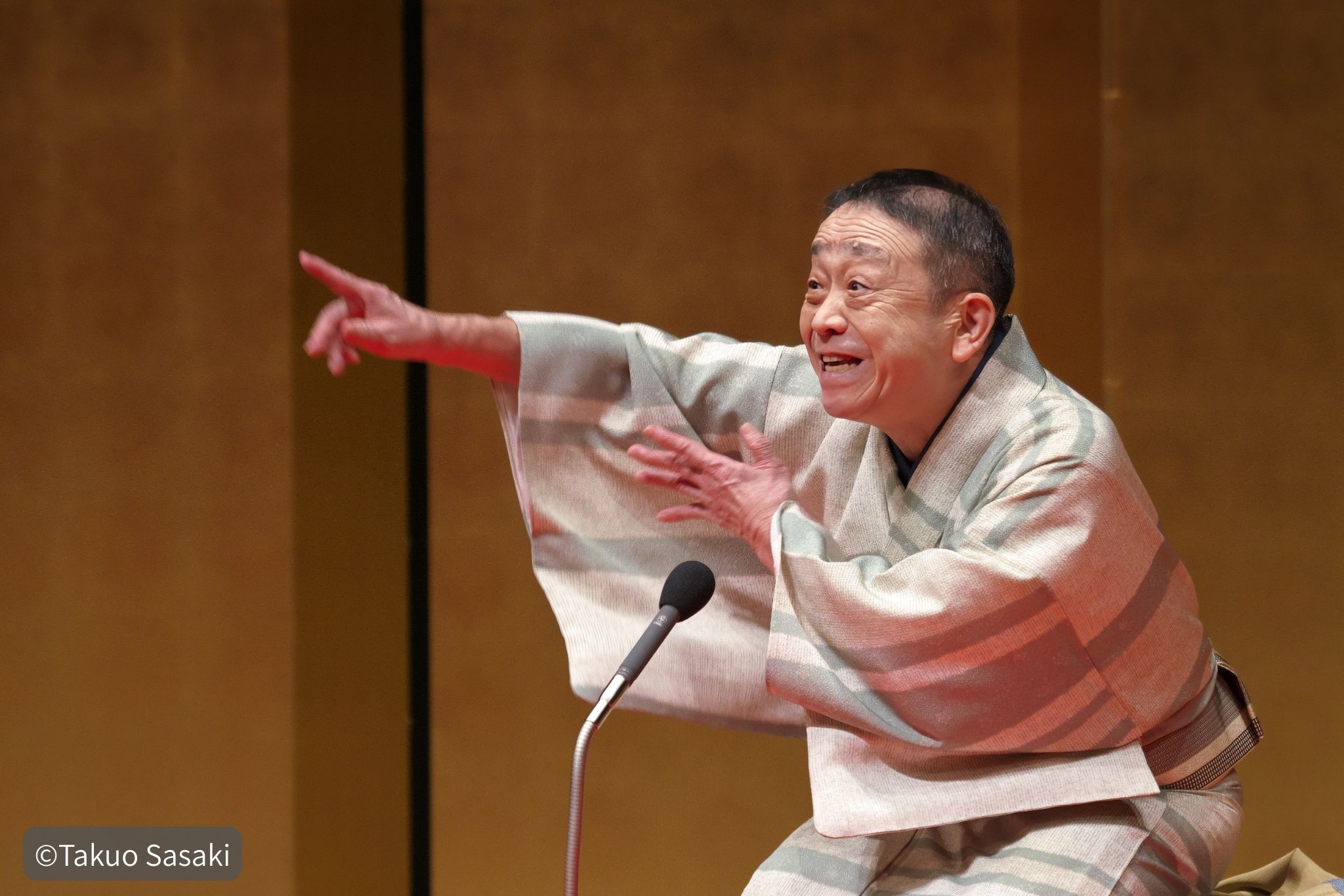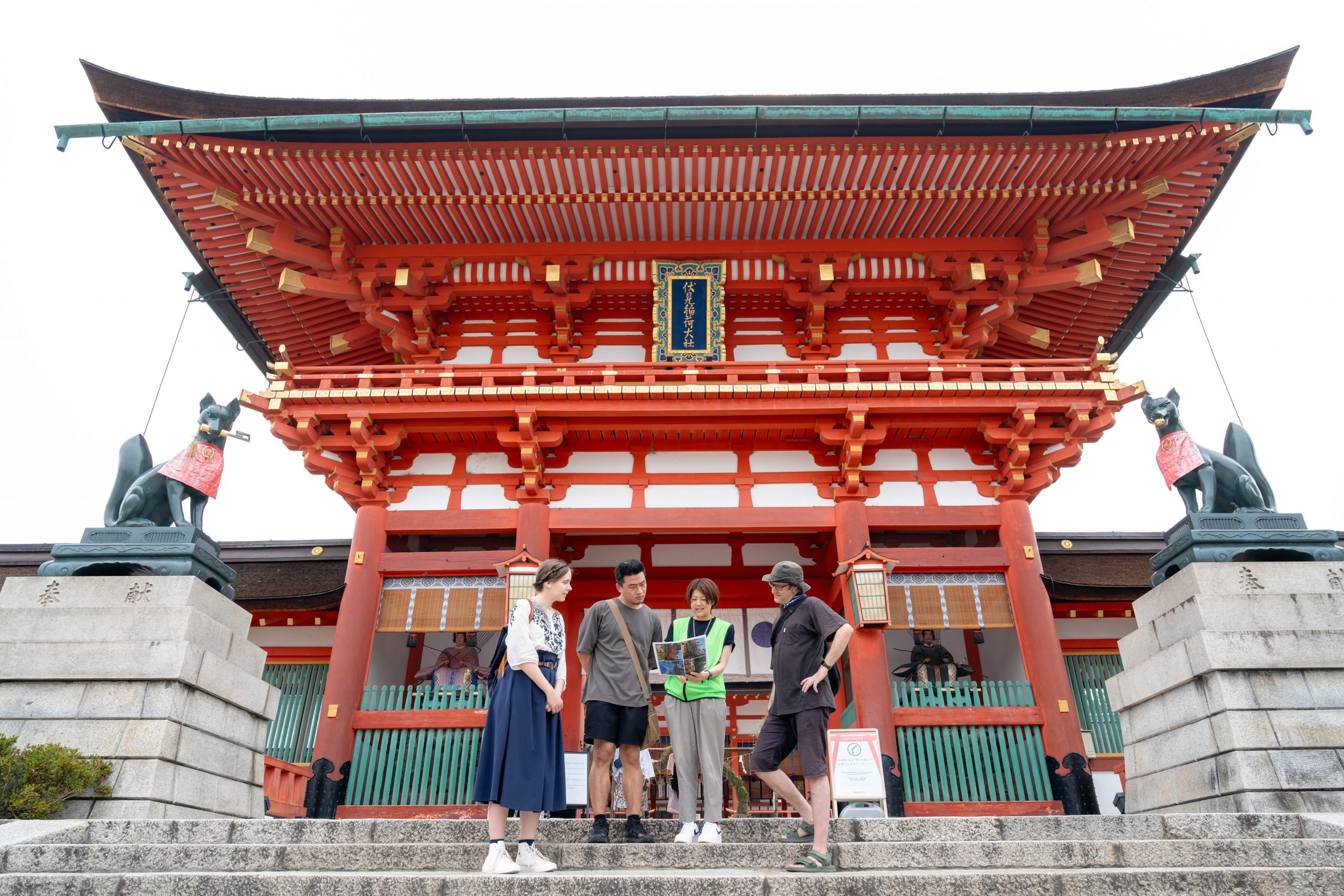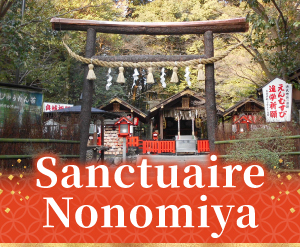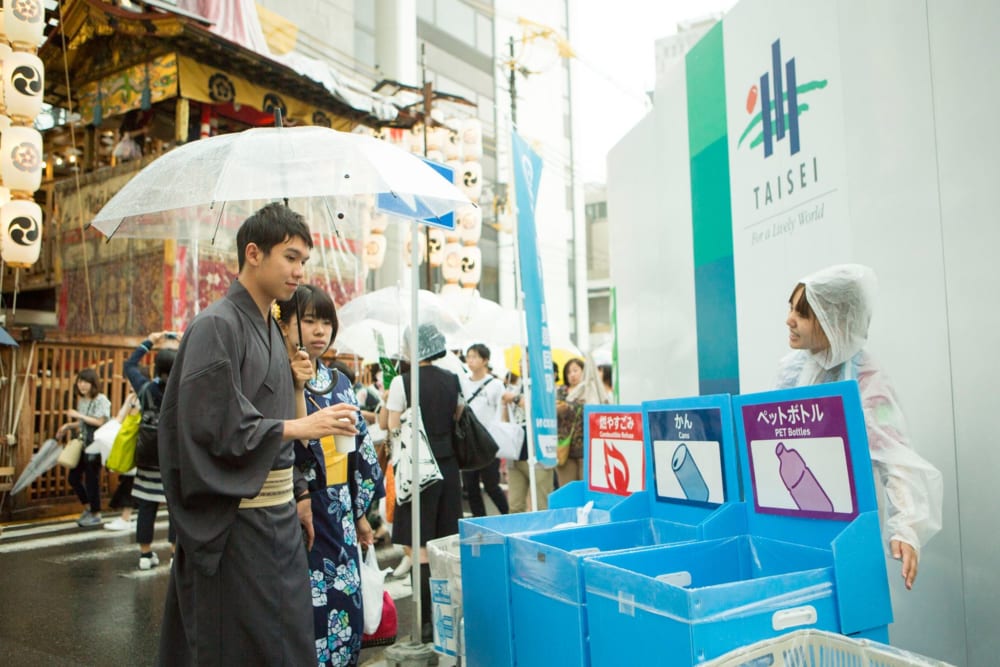
C'est bientôt la saison des festivals. Ça veut dire qu'il est temps de déguster des takoyaki (boulettes de pâte frites au poulpe) avec de la glace pilée et de la bière avec des yakitori (brochettes de poulet grillé) ! Se promener et choisir ses plats sur les stands locaux est l'un des plaisirs des festivals d'été. Mais cela génère aussi chaque année d'énormes quantités de déchets provenant des emballages alimentaires et des boissons, laissant les poubelles déborder.
Récemment, de plus en plus d'événements et de festivals ont commencé à introduire des contenants réutilisables à la place des contenants à usage unique. Si cette mesure s'est avérée efficace pour réduire les déchets, la plupart de ces festivals sont restés relativement petits, avec une participation de seulement 3 000 à 5 000 personnes.
Cependant, en 2014, l'ONG Environmental Design Laboratory ecotone, qui applique et promeut depuis de nombreuses années les contenants réutilisables, a introduit des contenants réutilisables pour 210 000 repas lors du festival Gion Matsuri de Kyoto, l'un des trois plus grands festivals du Japon, qui rassemble plus de 500 000 participants. La collecte et le tri des déchets ont été réalisés en collaboration avec des entreprises de collecte et de transport de déchets de Kyoto, la municipalité de Kyoto, de nombreux stands de rue et un large éventail d'ONG et d'associations basées à Kyoto. Ce projet a été baptisé « Projet Gomi Zero (Zéro Déchet) du festival Gion Matsuri ».
Quels ont été les résultats du projet Gomi Zero du festival Gion Matsuri ?
D'innombrables stands bordent les rues de la ville pendant les célébrations de Yoiyama, à la veille du défilé de chars décorés Yamahoko Junko, point d'orgue du festival Gion Matsuri. Les restaurants et commerces de proximité vendent également de la nourriture et des boissons, générant ainsi un volume important de déchets. Grâce au projet Gomi Zero du festival Gion, la quantité de déchets produite a diminué, passant d'environ 57 tonnes en 2013 à environ 42 tonnes (moyenne annuelle entre 2014 et 2018). La quantité de déchets produits par individu a également diminué, passant d'environ 114 grammes par personne en 2013, avant le lancement du projet, à environ 88 grammes. L'introduction de contenants alimentaires réutilisables lors d'un festival de grande envergure comme le festival Gion Matsuri a attiré l'attention, car il s'agit du premier test de ce type au Japon et dans le monde.
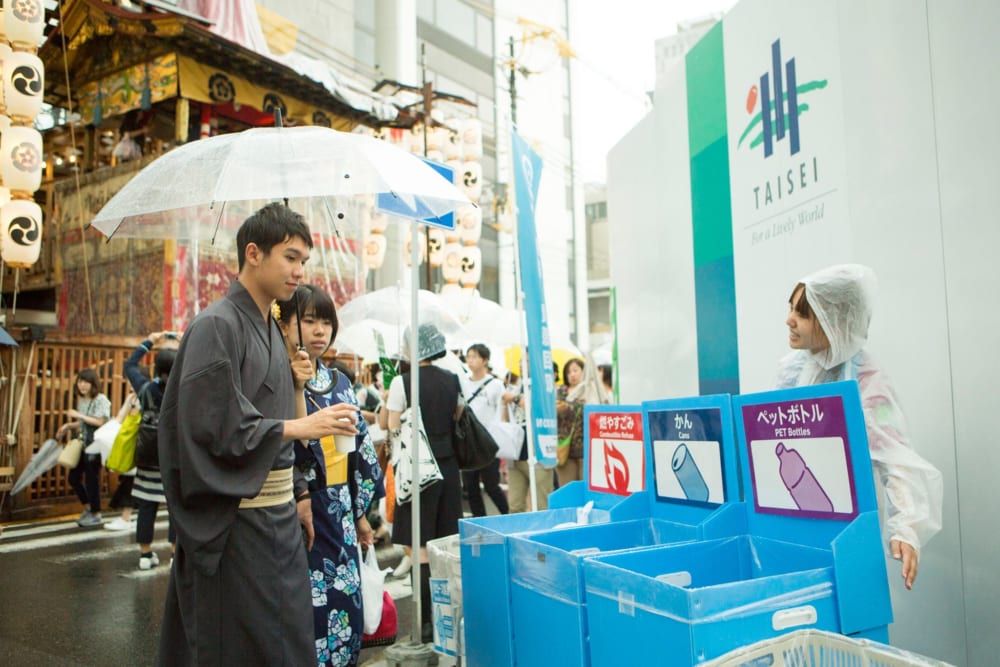
(c) Le projet Gomi Zero (Zéro Déchet) du festival Gion Matsuri
Les bénévoles ont un impact significatif sur le projet Gomi Zero. Environ 2 200 participants se sont portés volontaires, dont des étudiants, des adultes et des participants d'autres régions du Japon. 835 bénévoles étaient également présents au festival Tenjin d'Osaka.
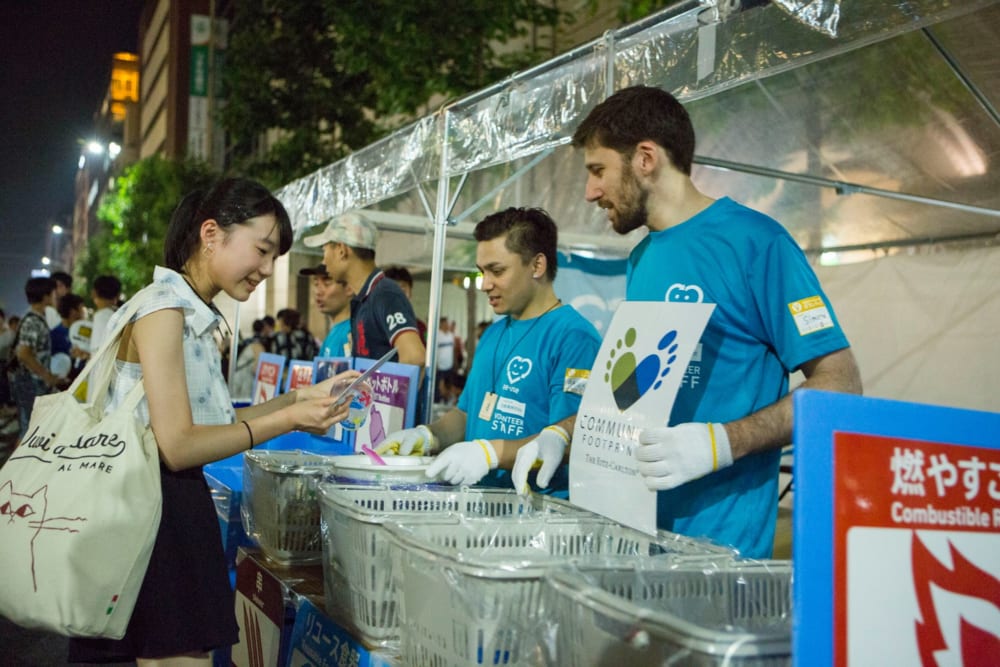
Bénévoles du projet Gomi Zero (c) Projet Gomi Zero (Zéro Déchet) du festival Gion Matsuri
Nous avons d'ailleurs participé nous aussi à ce premier projet Gomi Zero mémorable du festival Gion Matsuri. À la station écologique dédiée à la collecte des contenants réutilisables et au tri des déchets, nous avons ramassé sans relâche des bouteilles en plastique, des barquettes pour okonomiyaki (crêpes japonaises salées) et d'autres aliments. Nous avons été submergés par les énormes piles de sacs poubelles qui sont apparues en quelques minutes seulement. Rien que pour cela, nous étions heureux de savoir que ce projet réduisait la quantité de déchets, car les contenants réutilisables nous étaient rapportés !
Introduction de contenants alimentaires réutilisables dans davantage de festivals au Japon

Conteneurs réutilisables sur les stands de rue
Nous avons également observé une différence dans le niveau de sensibilisation des participants au festival Gion Matsuri grâce au projet Gomi Zero. Hiroshi Takatsuki, professeur à l'Université de Kyoto, a souligné que « l'expérience consistant à séparer les ressources des déchets, ainsi qu'à utiliser et rapporter les contenants réutilisables, pourrait même inciter de nombreux festivaliers et bénévoles à réduire leurs déchets au quotidien. »
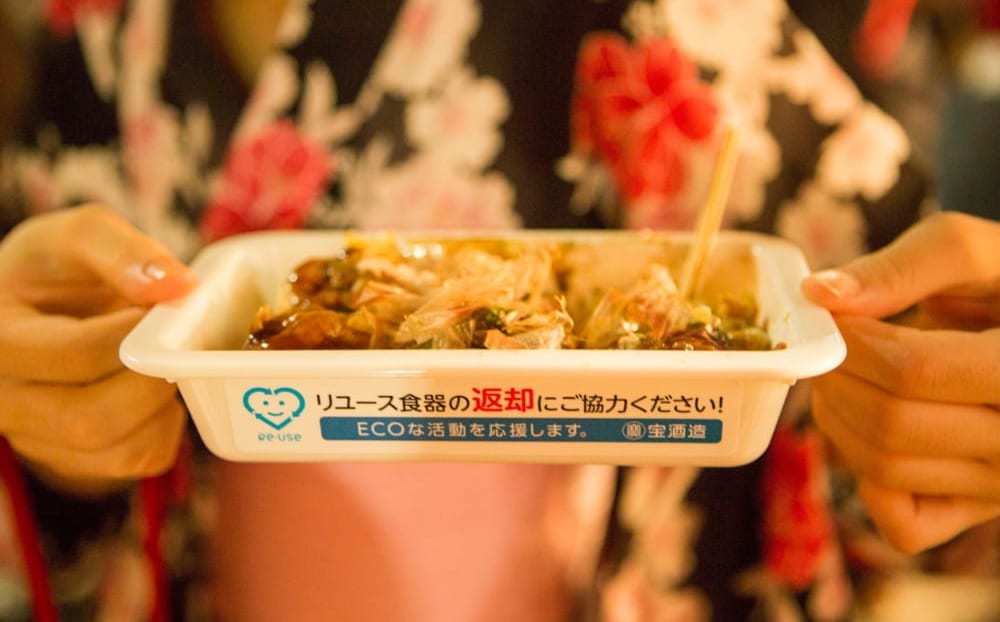
(c) Le projet Gomi Zero (Zéro Déchet) du festival Gion Matsuri
Selon Kohei Ota, directeur du Laboratoire de conception environnementale ecotone, de nombreux bénévoles ayant participé à ce projet ont également introduit des conteneurs réutilisables lors de festivals organisés dans leur quartier. Par exemple, des conteneurs réutilisables ont été introduits pour la première fois en 2019 au festival Bon Odori, organisé par le temple Tsukiji Hongan-ji de Tokyo. Ce festival de quatre jours attire généralement environ 120 000 personnes, et d'énormes quantités de déchets jonchent les allées des commerces le soir. La mise en œuvre du projet de réduction des déchets dans le cadre de ce festival aurait donc un impact positif. Ce sont des étudiants et des professeurs de l'Université Ryukoku, bénévoles au festival Gion Matsuri annuel, qui sont à l'origine de cette initiative.
Puis, un développement encore plus spectaculaire s'est produit. En 2017, le projet Gomi Zero du festival Tenjin a été lancé au festival Tenjin d'Osaka, qui, comme le festival Gion Matsuri, est l'un des trois plus grands festivals du Japon avec plus de 1,3 million de participants. Cette première année, le projet ne concernait qu'une portion d'un kilomètre du parc Minami-Temma, mais plus de 40 000 conteneurs réutilisables ont été utilisés et 14 « Stations écologiques » ont été installées. Résultat : outre la collecte de ressources, le projet a permis de réduire considérablement la quantité de déchets éparpillés dans la zone.

Gauche : 2016 Droite : 2017 (c) Projet Tenjin Festival Gomi Zero (Zéro Déchet)
Encourager la responsabilité personnelle en matière de déchets
Ota a suggéré de créer des mécanismes de responsabilisation des personnes chargées de l'élimination des déchets (responsabilités individuelles envers leurs propres déchets) comme sujet de réflexion future. Pour l'instant, la mobilisation des fonds nécessaires à la collecte des déchets à Kyoto incombe aux associations de quartier et aux vendeurs ambulants, mais pas aux commerces de proximité ni aux restaurants de bord de route.
Par ailleurs, les coûts du projet Gomi Zero sont actuellement couverts par des subventions et des aides sous forme de dons, par des collaborations avec des entreprises et par la municipalité de Kyoto, mais cette situation ne peut perdurer. La mise en place d'un mécanisme fondamental garantissant la prise en charge des coûts d'élimination par les producteurs de déchets est essentielle pour maintenir une gestion efficace de ce problème.
Le fait est que les ressources sont limitées. Face au problème actuel des déchets plastiques dans les océans, nous devons mettre un terme à cette époque où les entreprises de traitement des déchets jettent leurs déchets sans prendre leurs responsabilités. À l'instar de Kyoto et du festival Gion Matsuri, nous devons continuer à attirer l'attention sur les défis du passage aux produits réutilisables lors des festivals japonais et dans notre quotidien.





